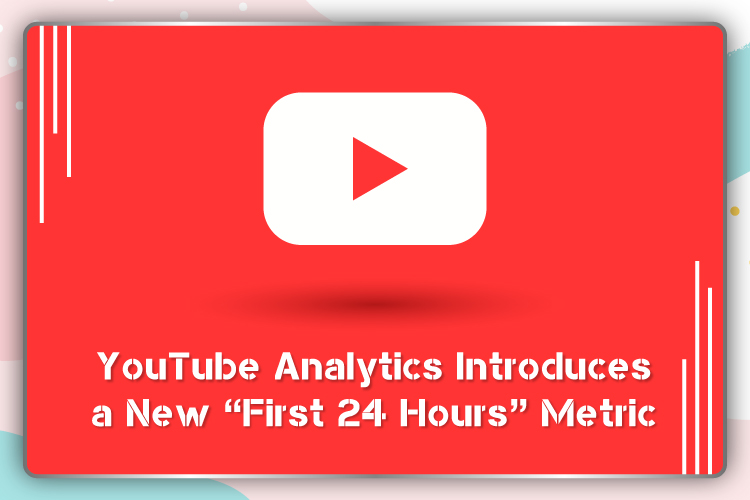YouTube Analytics Introduces a New “First 24 Hours” Metric

Google-owned popular video-streaming service, YouTube, has introduced a new metric that lets creators and channel owners gain insights into the video performance within the first 24 hours after uploading it.
Besides the audience view count, data showing a video’s performance within the first 24 hours of posting was never available on the platform before this.
However, from now, creators can access this information by going to the YouTube creator studio’s video analytics tab. You can fetch this data by choosing the “First 24 hours” option from the date picker available in the page’s top-right corner.
Let’s look at what data you will see upon choosing the first 24 hours view option in YouTube analytics.
YouTube First 24 Hours Metric
Once you pick the first 24 hours view from the date picker, a complete set of data gathered within the first 24 hours after uploading the video will be displayed on your screen.
As soon as the display page loads, the user will be greeted with a summary of their video’s performance at the top of the page. This summary gives the user a quick overview of the total number of views the specific video has received and how it compares to their past videos’ performance.
As users scroll down the page, they can see the total watch time acquired by the video during its first 24 hours of getting published. The new performance report will also provide you insights into the total number of subscribers you have obtained or lost within that specific time duration and the total revenue you earned if you monetized the video.
Even though the summary displayed at the top of the page helps determine how the new video’s performance compares to your previous videos’ performance, you can still go further in-depth about that.
In addition to rolling out the first 24 hours of data for videos, the platform is also providing creators with the ability to weigh up two videos at the same time.
Compare Performance Data Side-by-Side
Do you want to see how your new video’s performance compares to the performance of your recent video? Or any other previously published videos?
You can totally do that now!
Let’s see how.
Along with the new metric in analytics, YouTube has also enabled creators to compare two of their videos side-by-side.
When you do so, you will see a colorful graph at the top of the page. However, that’s just the start. As you scroll down the page, you can view more granular data about the traffic sources of both videos.
You will be able to see a breakdown of these sources of traffic for each video into the following categories:
- Browse features: These comprise views your videos have got from YouTube recommendations.
- Notifications: This shows your videos’ total views from subscribers clicking the notification for your new upload.
- Channel pages: It includes your videos’ total views from users clicking it on your YouTube channel page.
- External: It shows the total views your videos received from discovering it off-site, like on social media.
- Direct: This displays the total views your videos got from users navigating directly to the URL.
Among these metrics, you should ideally pay the most attention to the views you receive from notifications.
If you start noticing a sudden drop in those views over time, that indicates users who had earlier chosen to watch your videos are slowly becoming less interested in viewing them.
You can also compare the fluctuations in the “browse features” metric over time to determine how the platform’s algorithm responds to your video content.
Freshness is one of the many factors that YouTube’s algorithm considers (but bear in mind that it is one of the many factors; it is not everything). This is what makes the first 24 hours of a newly published video critical because that is when it gets the most amount of traffic and views from the freshness indication.
Wrapping It Up
YouTube will be rolling out the data gathered from a video’s performance within the first 24 hours for all newly uploaded videos.
Past data will be available for videos posted from 2019 onwards. Creators won’t be able to check the first 24 hours of view data for videos that were uploaded before 2019.
In addition to this, the first 24 hours of data won’t be available for live video streams as well since they have their own set of analytics.
These additions to the video-streaming platform are undoubtedly a bonus for creators as they can get better insights into the response of their audience and YouTube’s algorithm for their videos. This will indeed help creators come up with better content ideas and offer more fresh videos to their audience. So go ahead and check out this new feature.
